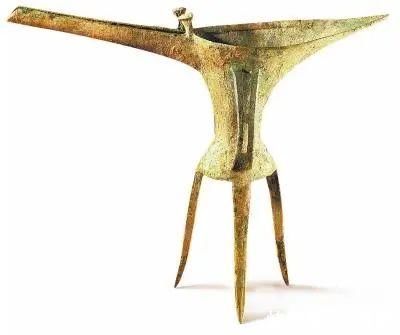城址$双语说河南|在中原 追寻夏的轨迹( 九 )
Major discoveries include the large bones used in sacrificial rituals, proto-porcelains and a large ring trench.
重要遗迹遗物:大型卜骨和原始瓷,大型围沟。

文章插图
The Erlitou Site in Yanshi: A 'Dynasty' in a Small Village
偃师二里头遗址:小村落里的“王朝气象”
In 1959, Xu Xusheng, a famous Chinese archaeologist, discovered the Erlitou Site. Over the past almost 6 decades, more significant discoveries were made. It is generally believed that the Erlitou Site is the earliest large capital city during the Bronze Age (at least 4,000 years ago) in East Asia so far uncovered, a key to the exploration of the Xia and Shang (1600 BC-1046 BC) dynasties. The Erlitou Culture (around 1635 BC-1565 BC) represented by the Erlitou Site is the earliest "core culture" in China and even East Asia at that time. Featured by its groundbreaking layout, broadness and cultural influence, Erlitou became the earliest sovereign state and established itself as the core and leader of the overall process of Chinese civilization.
1959年,著名考古学家徐旭生先生为调查“夏墟”发现二里头遗址,随后近60年的发掘,发现了丰富而高级别的文化内涵。学界多认为二里头遗址是迄今所知东亚地区青铜时代最早的大型都城、探索夏王朝的关键性遗址,以二里头遗址为代表的二里头文化,是中国乃至东亚地区最早的“核心文化”、最早的广域王权国家、“中华文明总进程的核心与引领者”。
It was like a dynasty, not only because of the Erlitou Site itself, but the overall distribution of the Erlitou Culture sites. Among 400 settlements of the Erlitou Culture, the 300-square-meter Erlitou was their capital (the largest one in China and even East Asia at that time), which indicates that the ritual system had been formed at that time. Besides, its overall orderly planning, palace system embodied by the large rammed-earth foundations, burial system indicated by the aristocratic tombs and sacrificial system represented by the places dedicated to sacrificial activities and relevant remains can also prove the core position of Erlitou.
二里头文化核心地位的确立,首先在于自身的“王朝气象”。最突出的表现是现存面积为300万平方米、是当时中国乃至东亚地区最大的二里头文化都邑,表明独具中国古代政治文明特质的王朝礼制已经形成。这些发现包括二里头都邑整体严整有序的规划,大型夯土基址为代表的宫室制度,贵族墓葬显示出的墓葬制度,专门祭祀区域和祭祀遗存体现的祭祀制度等。
The Erlitou Site has many groundbreaking findings with many "earliests" in China, such as the country's earliest main stem network, imperial city, central axis, rammed-earth building complex with multiple yards, high-level sacrificial remains, official handicraft workshop area, bronze-casting workshop, turquoise-processing facility, and a horde of ritual bronze vessels and weapons. All of them are core elements of Erlitou, the capital city.
二里头遗址有很多“中国最早”:中国最早的城市主干道路网络、宫城、中轴对称和多进院落的夯土建筑群、高等级祭祀遗迹、最早的官营手工业作坊区、铸铜作坊、绿松石器加工作坊和青铜礼器、兵器群,这些都是二里头都城的核心要素。
Many scholars pointed out that the Erlitou Site was the location of Zhenxun (斟鄩), a capital city of the middle and late Xia Dynasty. The excavation at the Erlitou Site is still in progress with many new discoveries. For example, the east-west roads were found to stretch further to the west with the remains of walls discovered on the roadsides, indicating a broader grid layout.
很多学者认为,二里头遗址就是夏代中晚期都城斟鄩。目前,考古发掘还在进行当中,有不少新的发现,二里头遗址可能有比井字形更大的网格道路布局。
- 小说$6本男主假高冷小说,强推《镇河》好好笑,作者脑洞未免也太大了
- 王之心&四本开局就惊艳读者的小说,一看书名就想入坑,书荒的你值得拥有
- 船夫&新科状元乘船回家,船夫随口说出一上联,状元却至死都没对出来
- 热血小说$15年老书虫推荐3本百看不厌的热血小说,值得你通宵达旦看完啊!
- 梁炎东!3部强逻辑悬疑小说,人间修罗案神乎其神,谁能戳破鬼怪谣言?
- |茅奖小说《暗算》出版20年,精装版归来继续密码和人心全解密
- 逍遥小书生!五本不输《赘婿》的架空历史小说,评分高达9.5!全部都是精品
- 方腊#鲁智深生擒方腊后说了2句话,共6个好汉听懂了,离开宋江得善终
- 进化&碾压《诡秘之主》,反超《牧神记》,辰东这本小说爆红逆袭登顶
- 帕子@《我的前夫是宦官》当我的丈夫是个宦官,我和他不得不说的故事!
